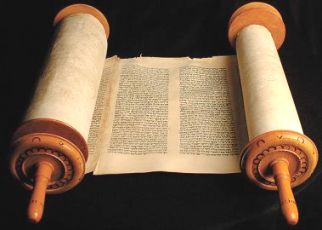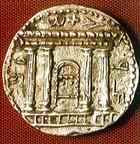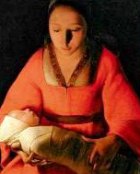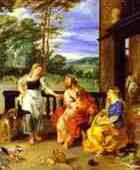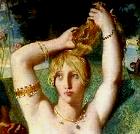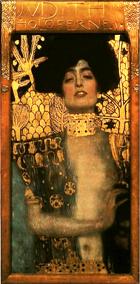Jesus and the woman taken in adultery
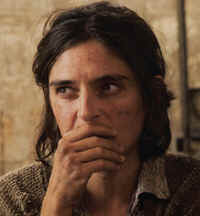 The story of Jesus and the adulterous woman took place in a world quite different to our own.
The story of Jesus and the adulterous woman took place in a world quite different to our own.
Attitudes to Women
Greek ideas were greatly admired at that time. They had a profound effect on the way that people saw their world.
One of the greatest philosophers, Plato, proposed the theory of dualism, suggesting that everything in the cosmos had an equal and opposite other.
This theory was not to women’s advantage, since ‘woman’, especially any woman who had been caught committing adultery, was placed in a category that was negative:
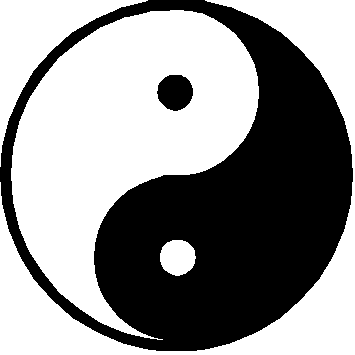
The Yin Yang symbol
Man ……………… Woman
Good ……………… Evil
Civilization ………. Nature
Reason/logic …… Emotion
Light ……………. Darkness
Keep in mind that civilization was the ideal; Nature was mistrusted and potentially dangerous:
- logic and reason were admired, and emotion was to be subordinated
- goodness was always preferable to evil
- light, especially in the pre-industrial world, was preferred to darkness.
These are only examples, but Platonic dualism saw women as a negative.
Women were thought to be closer to the natural/animal world than men. By nature they were irrational and untrustworthy, and therefore unfit to make their own decisions and govern their own lives. They had to be looked after and controlled.
What was the traditional Jewish viewpoint?
This was different from the traditional Jewish way of looking at the world, which saw all things in creation as integrated and complementary, rather than as opposites of each other.
An example of this is the creation story of Eve, which relates that the first woman was created from a rib taken by God from Adam‘s side, thereby suggesting that a man could never be fully complete unless he was in partnership with a woman.
Jewish and Jewish/Christian women resisted the ideas of Platonic dualism, which patronized them and diminished their status.
While Christianity remained a Jewish sect, the status of women within the Christian communities was high.
Save
Jesus’ Teaching Modified
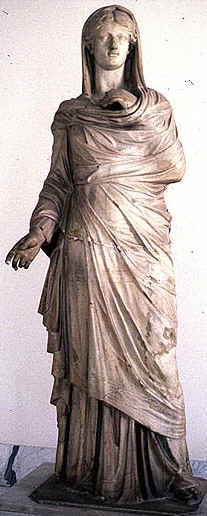
The ideal Roman matron
But as the ideas of Christianity moved out into the Gentile, Hellenised world, the first Christians found they had to use the Greek philosophical framework to explain their beliefs and be accepted.
So Jesus’ original ideal of mutual respect between the sexes was watered down and changed. Women found they were given roles that were acceptable in the outside, Hellenistic culture.
In doing so, the Christian church stepped back from the radical ideals of the first Jewish/Christians.
Women were still powerful in the private sphere, but were shunted to the side in the public arena.
This shows up, for example, in 1st and 2nd century re-tellings of the biblical stories. Where these stories had often had women as central characters, they now focused on men and male activities.
Example: Moses’ birth story
Ancient Egyptian statuette of a Hebrew woman with her baby[/caption]
An example of this is the story of Moses’ birth in Josephus’ Antiquities (Josephus was a Jewish writer and historian of the 1st century BC).
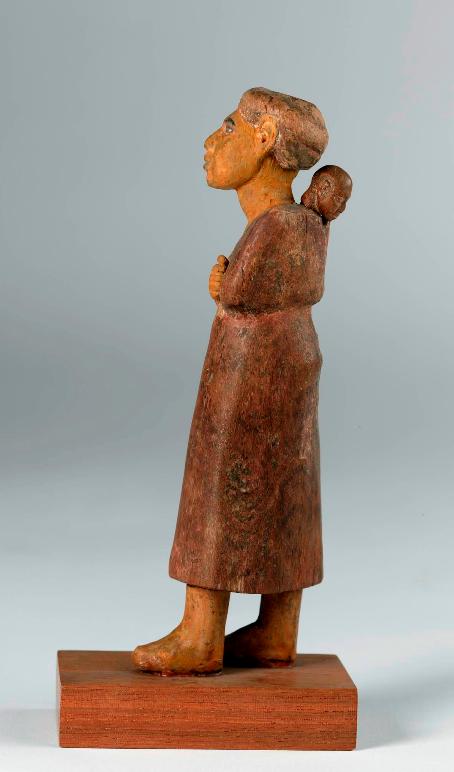
Ancient Egyptian statuette of a Hebrew woman with her baby
In the original biblical telling of the story (in Exodus 1 and 2)
- the baby Moses is saved by the two midwives, (see their story in Bible Top Ten Heroines), by his mother, by his sister Miriam, and by Pharaoh’s daughter – all, obviously, women.
- In Josephus’ retelling of the story written in about 94AD, the focus is largely on Moses’ father Amram. He performs many of the actions previously attributed to the women. Female characters in the story are changed.
For example, in Josephus’ retelling of the story the mid-wives
- are Egyptian, not Hebrew
- are unnamed
- are not present at Moses’ birth
- kill Hebrew babies, not save them.
The basic story of Moses’ birth remains the same, but the female dimension has been lost.
Save
Anti-Semitism in the Roman world
There were reasons for the changes Josephus made to the story. He was trying to counter the anti-Semitism that existed in Rome at the time, so he wrote about Jewish women who behaved like decent Roman matrons!
This ideal of Roman womanhood had been vigorously promoted in a ‘back to basics’ program by the emperor Augustus and the Roman authorities.
What was the ideal woman?
The ideal Roman woman, it was said, was
- a mother of many children, content with her household duties
- content with her traditional role in the home, and did not speak assertively to the men in her family
- did not enter the public world
- most assuredly she did not commit adultery, or even place herself in a position where she might be suspected of adultery.
For additional information on the lives of women in the Bible, see
Family, Work and Religion: the tribe, the family, slaves, women’s tasks, beliefs
Milestones in a woman’s life: Puberty, menstruation, marriage, childbirth, death, burials
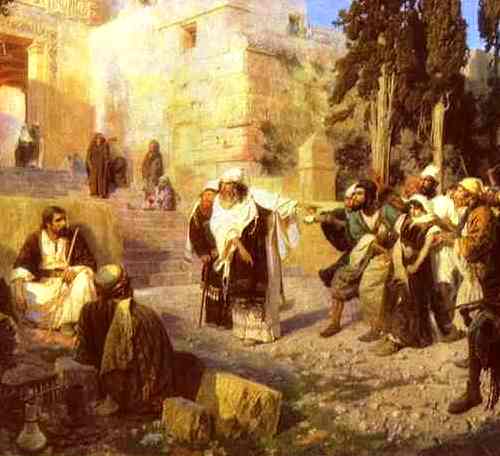
Christ and the Woman Taken in Adultery, Vasiliy Polenov
Pretty artwork (above) and the reality (below)
The brutality behind this gospel story should not be glossed over with pretty images of Jesus and a downcast woman. In fact, the reality might have been closer to the horrific photograph shown below.

Read other stories about
the women in the Bible
Search Box
![]()
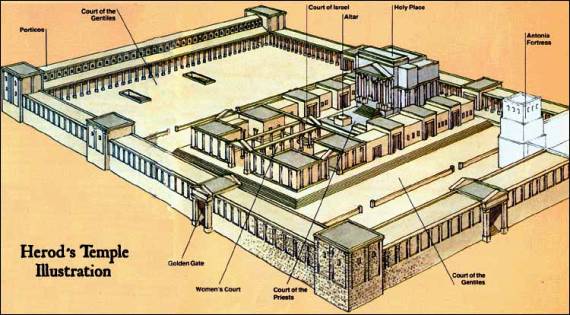
Ground plan of the Temple of Jerusalem at the time of Jesus
Adulterous woman links
Famous Paintings
© Copyright 2006
Elizabeth Fletcher


